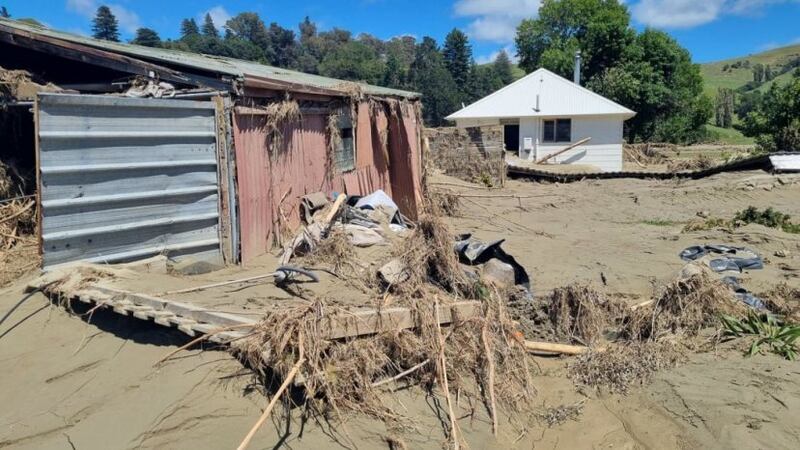A property in Esk Valley after flooding caused by Cyclone Gabrielle, taken on Saturday 18 February. Photo / RNZ / Tess Brunton
A decision not to hold mass evacuations in the Esk Valley is being defended by the Hawke's Bay Regional Council.
Floodwaters ripped through the area early on Tuesday morning, destroying property and taking the life of a two-year-old girl.
Council interim chief executive Pieri Munro said based on their forecasting on Monday, February 13 they gave a notification to those in the low-lying areas, who self-evacuated.
"There was nothing in the information that we were receiving that indicated that there should have been a mass evacuation or formal evacuation."
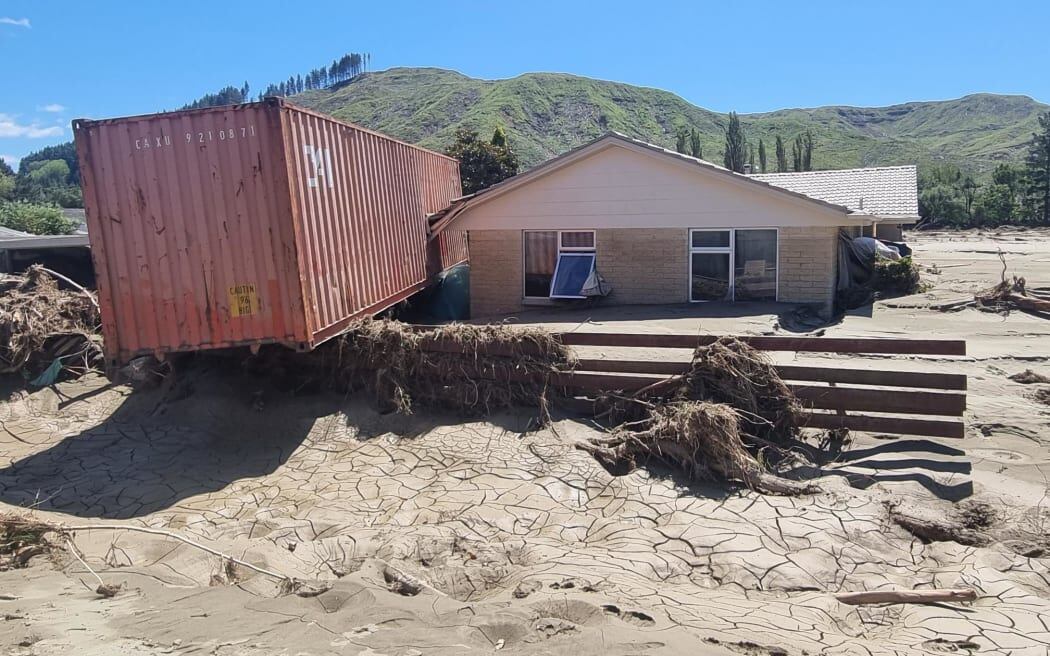
People in Esk Valley described escaping onto roofs and the tops vehicles but then finding those spots precarious as flood waters and debris swept past them. Photo / RNZ / Tess Brunton
He said the change in water levels was swift and was double what they had forecast.
Eskdale resident Billy MacDonald witnessed the flooding firsthand: He described people calling for help from their rooftops, surrounded by fast-moving flood waters.
By the time an alert came through, the valley was already flooded, he said.
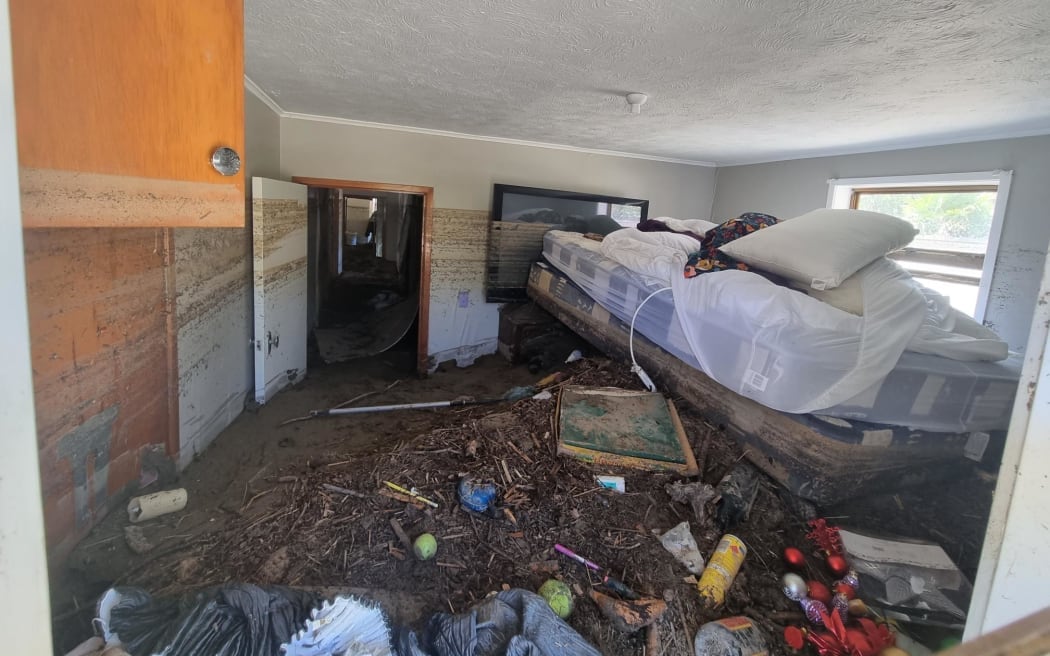
Flood waters rose to the ceilings of some houses. Photo / RNZ / Tess Brunton
Eskdale-based Doggy Farmstay kennel owner Maureen Dorr said they managed to keep several dogs alive by holding some to the ceiling and putting others above the floodwaters until they could escape.
She said they spent 12 hours like that, because going outside was even worse.
Elsewhere in the valley a two-year-old girl drowned in what her family described as an "unavoidable accident" when floodwaters rose to the ceiling of their house.
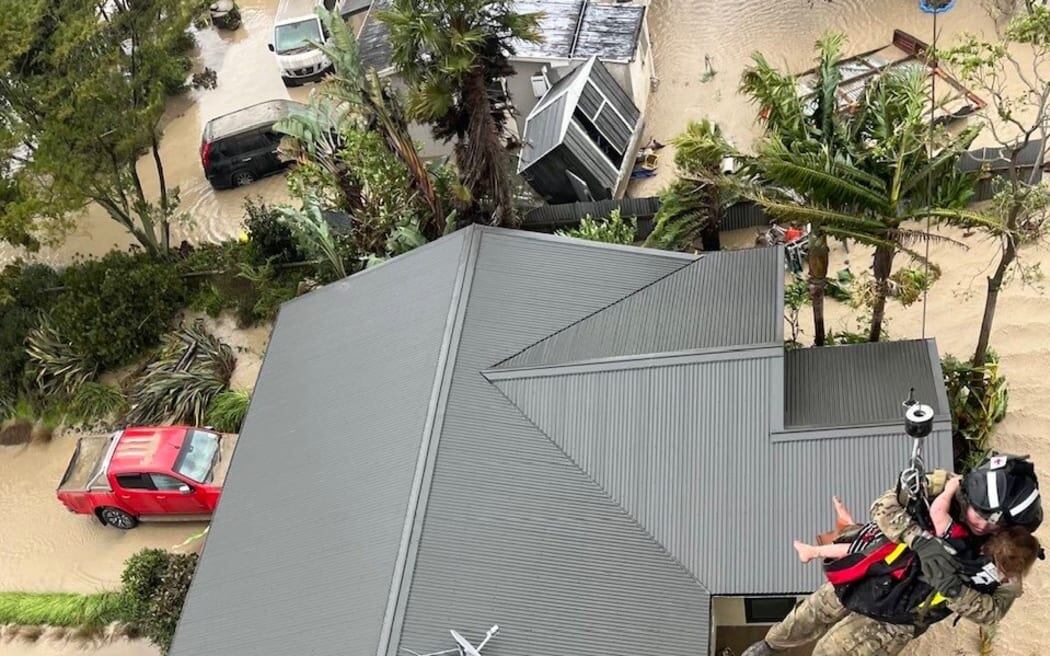
The Defence Force used an NH90 helicopter to rescue people from the rooftops of their homes in Esk Valley. Photo / Supplied / NZDF
Seven of the 10 sites monitoring river flows and rainfall in the Esk Valley went offline about 1am on Tuesday morning.
"Once the power and everything went out, we were flying blind because we didn't have any telemetry nor cell network to tell us what was happening," Munro said.
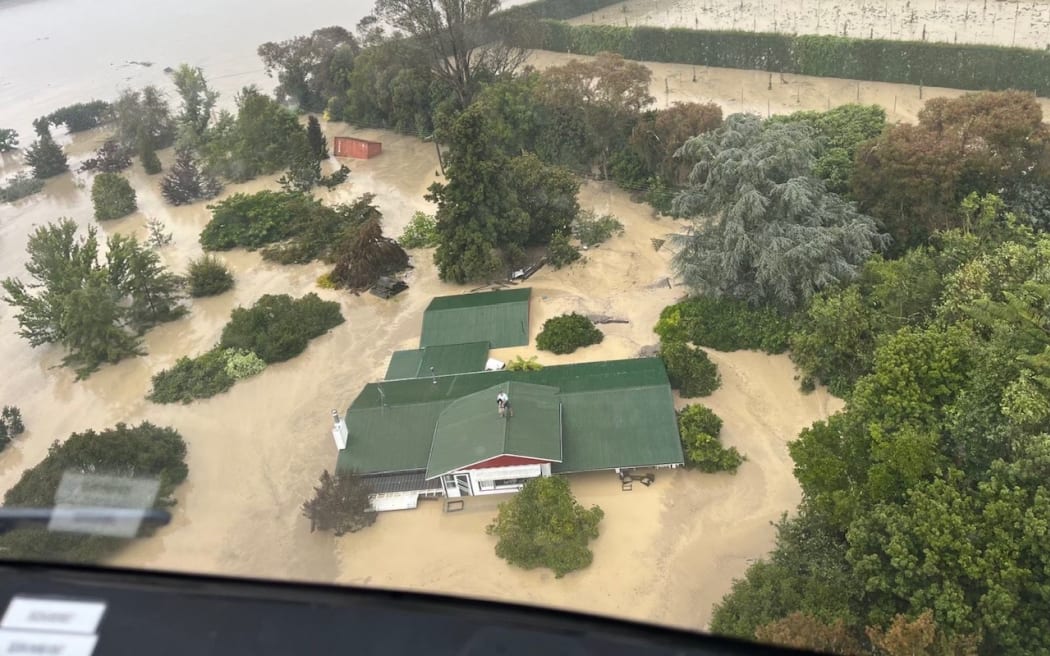
A Defence Force image of an Esk Valley property during the flooding. Photo / Supplied / NZDF
He said once Cyclone Gabrielle set upon Hawke's Bay there was no opportunity for them to get any further information out.
Munro told Morning Report they lost the rain and river level monitoring sites system due to a repeater failure - the cell site towers needed to feed the data.
It was important to remember the cyclone forecast had predicted most of the rain would be concentrated in the Ruahine Ranges, which were expected to receive up to 350mm.
But what happened was the reverse, with most of the rain being directed at the Maungaharuru Range which feeds down into the Esk Valley.
"It exceeded all of the expectations and certainly the data and forecasting we'd done the day before."
With all of the cell and communications down, it would have been very difficult to notify anyone, Munro said.
The monitoring equipment in the rivers is based on handling the kind of floods that have hit the region in the past.
Munro acknowledged questions would need to be asked and reviews of the week done. But he said right now the council was focused on responding to the crisis.
Retrieved data shows 'extraordinary magnitude' of event
Munro said some of the data that was starting to be retrieved showed "the extraordinary magnitude of this event".
The Glengarry gauge that is used to monitor the Esk Valley shows it received 502mm over 24 hours, the equivalent of nearly six months of rainfall. Between 1am and 7am, the gauge received 262mm of rainfall.
Munro said all the data will be made public but it was already showing it was "the largest rainfall event at a number of sites ever recorded in the region".
Chair Hinewai Ormbsy said the council would fully co-operate with any inquiry into failings in warning systems, resilience and response when the time came but the focus at the moment was to provide critical support for the region.
Alerts from the National Emergency Management Agency for February 19
- Keep up to date with advice from your local CDEM Group or from civildefence.govt.nz
- Floodwaters may be full of sewage, chemicals and other hazardous materials and should be avoided as much as possible
- Floodwater can carry bacteria that can contaminate food
- Protect yourself when cleaning up flood water and mud by wearing a properly fitted P2- or N95-rated mask, goggles, gloves, long pants, long-sleeved shirt, and gumboots or work shoes
- Throw away all food and drinking water that has come in contact with floodwater
- Do not eat garden produce if the soil has been flooded
- In power outages use torches instead of candles, and only use camp cookers and BBQs outdoors.
- Conserve water where you are advised to
- Check the location of pipes and cables before you dig; see Chorus' Before You Dig website and beforeudig.co.nz for all utilities
- The best way to assist in the response is through financial donations and NOT through donated goods.

